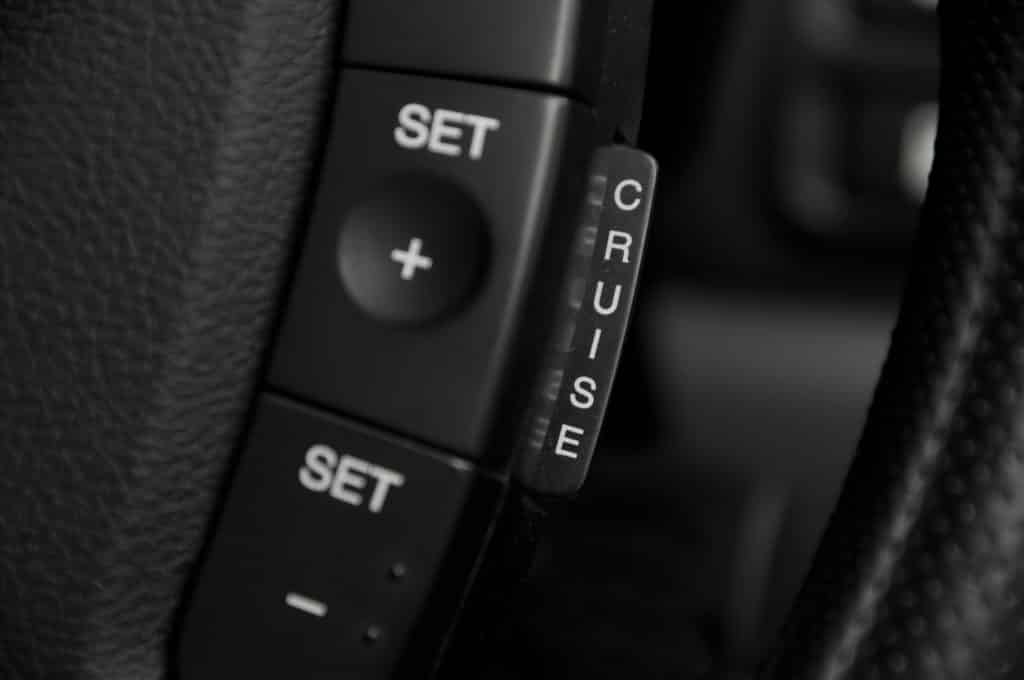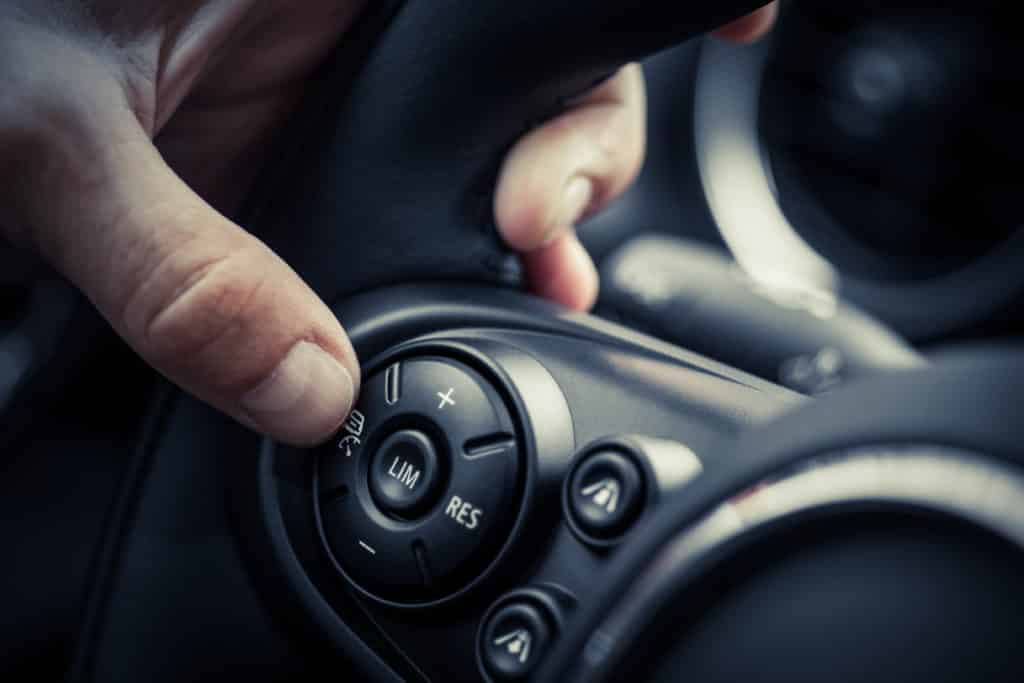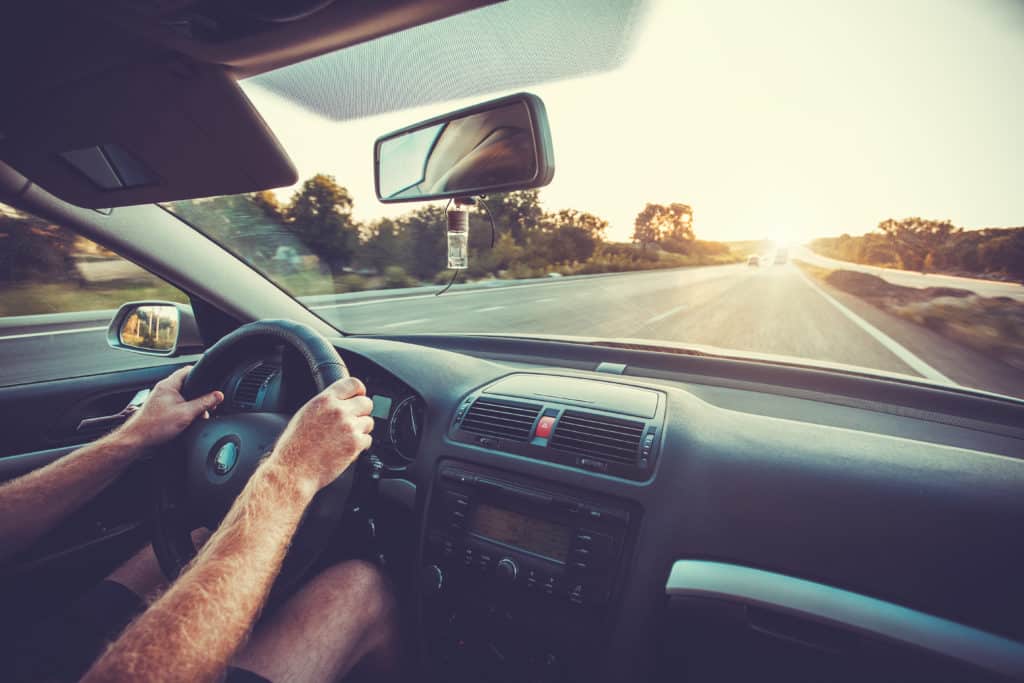Whether it’s a single button or a shifting pedal on the steering wheel, cruise control is a no-brainer, right? It exists purely to make our lives simpler, and we shouldn’t spare it another thought. Well, if you’ve ever wondered about the ins and outs of the labor-saving technology, we’re here to answer a few simple questions about cruise control.

What Is Cruise Control?
Cruise control is a feature inherent in all vehicles built within the last 30 years. It allows the driver to maintain a set speed without using the accelerator. You come to the desired speed by manually pressing the accelerator pedal, set cruise, and the car will continue at the same speed until the break is pressed or the speed is adjusted through the cruise mechanism.
The system was invented by Ralph Teetor. A perceptive blind automotive engineer, Teetor noticed the tendency of drivers to slow down while listening to a conversation in the car and to speed up when talking themselves. In the late 1940s, he filed a patent for a system to keep the car at speed, a system he coined “Speedostat.” Chrysler soon adopted the technology, and all other car manufacturers followed suit, including General Motors who changed the name to cruise control.
How Does Cruise Control Work?
The speed of your vehicle is governed by the throttle valve, which manages an engine’s speed and power by limiting its air intake. This is true whether you manually increase the speed with the gas pedal or use cruise control. The cruise system adjusts the throttle position by a cable connected to an actuator. Since a car’s accelerator is also connected to the throttle by cable, the gas pedal shifts slightly up and down as the cruise system manages the vehicle’s speed. The actuator is able to adjust speed incrementally, so for each tap to increase or decrease the set speed, the system will adjust the vehicle’s speed by 1 mph.
Does Cruise Damage A Car?
When cruise control is used properly, it is a very safe mechanism for drivers and for vehicles. In fact, it offers a more fuel-efficient experience because the car does not have to constantly accelerate and decelerate. For this same reason, using cruise limits the wear and tear on your mechanics, including the braking system.

Is Cruise Control Safe?
On its own, cruise control is not dangerous, and it has many safety features built in. The system is designed to disengage at the tap of the brakes, and it will not set at speeds below 25 mph. If used properly, it can even help avoid speeding and subsequent tickets for those with lead feet. The key is “if used properly.” Relying too heavily on cruise control at the expense of paying attention to one’s surroundings or using it in unfit conditions can result in damage to the vehicle and harm to the driver.
When Should You Not Use Cruise Control?
While cruise control is a helpful tool, there are some situations in which it should not be used. Use good judgment when deciding when to engage your cruise system.
On Wet Roads
A myth exists that maintaining constant speed is better for the traction of your car on slippery roads, but this is not the case. Stay alert in conditions of wet weather so that you do not skid, slip, or hydroplane. While turning on cruise control will not immediately cause these things, per se, using cruise on wet roads increases the risk, even if you have traction control features.
In Heavy Traffic
Cruise works best on long stretches of constant speed. If you experience patches of commuter congestion or clogging construction, keep a close eye on your speed, avoiding cruise control. While strides are being made to incorporate radar and other sensory technology into cruise systems to create adaptive cruise control, the systems readily on the market are not there yet.
Around Town
For the same reasons as above, it is better to use manually controlled speed in the city or around town. Be mindful of pedestrians, traffic lights, and 90° turns.

On Winding Roads
Cruise control is not an auto-pilot. It will not adjust speeds for corners and tight turns. If you are driving through a national park or through a canyon, adjust your speed manually to compensate.
When You’re Drowsy
Using cruise control can be tempting when you’ve been on the road all day and you are eager to get home, but if your eyelids start feeling heavy or your brain starts to wander, do not rely on cruise to get you home. Pull over and rest for your own safety and for others’.
Cruise control is a helpful tool to make driving a more enjoyable experience. It is important to remember, however, that it is ultimately the driver’s responsibility to ensure the car is safely in control.
